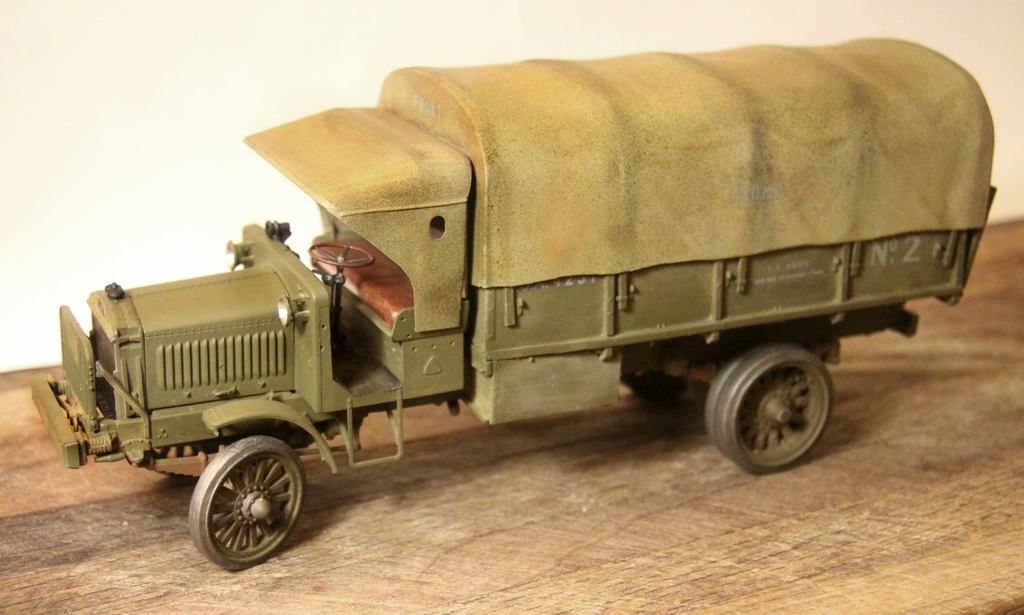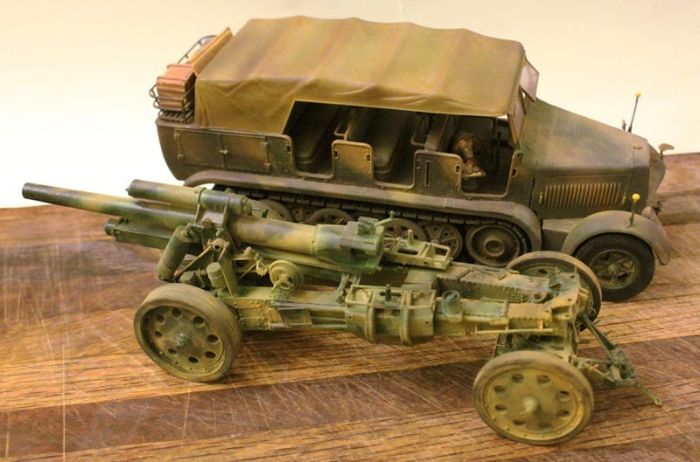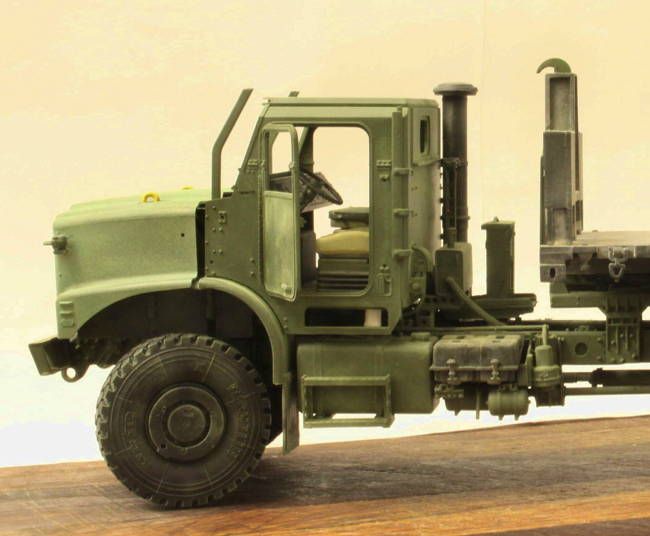Quoted Text
Ive searched youtube for info on how to add a bit of realism to my AFV M35a2. No luck there.
I want the canvas cargo cover or "tilt" as I used to know it, to look faded and weathered during use in ODS.
Any suggestions, ideas or links would be much appreciated.
Thanks Guys 
Hi, Denis!

I generally don't use Youtube as a reference because they tend to be "too general" in nature. If you have access to "GOOGLE", I would use that instead. Just enter "M35A", and you should be able to view many M35As in a variety of color schemes nearly instantaneously. If you like to use books for reference, I can suggest the CONCORD series of books dealing with ODS, and as far as colors are concerned, you can look at newer vehicles US vehicles that took part in OIF. The colors themselves in general haven't changed by much, but only in the way that they were/are used.
I don't know of any specific links to send you to that show M35A2s during ODS, but as far as weathering the canvas "Cargo Bed Tarps", "Tilts" or what have you, I would use ANY color photos of modern-day US "Soft-skins" for reference- I say this because whichever color you are going to use as a base, the "tarps", "covers" or "tilts" are going to weather in the same way, depending on the severity of the environment in which the vehicle is deployed.
As to the weathering process, I can give you a few suggestions, in any case...
First, the top surface will necessarily fade in color much quicker that the sides and the interiors, so that's something that you will want to keep in mind.
I personally like to start out with a slightly "faded" OD BASE COLOR, i.e, FS34087. Take your pick of favorite paint manufacturers... Once my base coat is completely dry, I will first "DUST" on a very light coat of TESTORS Model Master ("rattle-can") No. 1960 LUSTERLESS (Flat) LACQUER OVERCOAT over my base coat as my sealer. Once this is completely dry, I will then apply a darker, thin "benign"-type of wash in order to emphasize the "valleys" of my tarp. You will want to go easy with this wash, and wipe away the "excess" as you would normally do in a case where you are painting "fabric materials" such as clothing, packs, etc. When I say "benign", I mean that the wash shouldn't be thinned with any kind of an aggressive thinner that could harm the base coat and the sealer, even though the TESTORS 1960 is pretty tough once it has dried...
Once this process has been done properly, I like to dust on another very light coat of my Lusterless Flat and set it aside to dry properly. So what's a good "drying time"..? As for myself, I like to give drying time 24 hours- Yes, that draws the working time of any project out, but believe me, it's worth it in the end. Fortunately, I have a lot of patience.
I STILL like to use a subtle dry-brushing technique in order to emphasize the "high-spots" of my folds, wrinkles, and the ridge lines of the "Tarp Supports" that show through the material of the canvas. I also like to do this with the clothing and equipment of my figures. This, of course will necessarily be a lighter shade of my base color- The "trick" to this is NOT TO GO HEAVY on the dry-brushing- I DON'T LIKE OILS for this kind of thing- Based on my own personal experience, I like to keep ALL of my paints MADE BY THE SAME MANUFACTURER on any given project. Yours truly is a "traditional" (read: "old-fashioned") old cuss- I STILL use TESTORS MODEL MASTER II ENAMELS for ALL of my paintwork. It has worked for me over many years, so I stick with what works for me. I also like to use certain shades of my weathering powders/pigments to "blend" shadows and high spots. I do this in order to give these "hills and valleys" a more natural appearance.
In my dry-brushing, I like to add a miniscule amount of lighter-colored weathering powder to the paint mix on my palette- I choose my light colors to fit into the general color range that I'm using. These lighter colors will not appreciably alter the color of the dry-brushing mix, whereas using darker colors of weathering powders will DEFINITELY ruin your dry-brushing mix. I do this to prevent my "flat" dry-brushing mix from turning glossy, as enamels are wont to do in any brush applications. The weathering powders/pigments will tend to make the dry-brushing mix to dry out on my palette very quickly. I keep my mix moistened with my TESTORS enamel Thinners. One tiny dip of a small-to-medium-sized brush into my small handy-dandy jar of clean thinner and one quick dab of this into my dry-brushing mix every so often keeps the dry-brushing process running smoothly. The thing that many modelers forget when dry-brushing is this little rule: "Less Is More, so keep it LIGHT"...
It saves "heartaches and headaches" to use the same paint and thinner manufacturer in all of my paintwork. And THIS should be one of the maxims in painting models. Time and time again, I've read through forums on this site where modelers are running into trouble when they mix paints and thinners from different manufacturers; globbing, scaling, cracking, "orange-peeling", you name it- The culprit is usually because the modeler has used a thinner made by a different manufacturer from their paints...
Once this is all done, I like to airbrush a VERY TRANSLUCENT coat of "dust" over the top surface and a little bit along the bottom edges of my tarp/tilt/cargo bed cover. This sort of "melds" the whole thing together, and also "softens" the effect of the different colors used in the painting of my tarp's folds and wrinkles, etc. "Dust" should be a mixture of mostly thinners with just a few drops of a color that matches the DRY earth/sand/dried mud of whichever environment that you've chosen for your vehicle. Replicating "wet" mud is another story, entirely.
A great thing that I like about using the TESTORS Model Master Lusterless Flat is that once it is sprayed on as final coat, it somehow makes everything blend together smoothly so that one can still see the shadows and high points of the whole weathering process, yet there is none of the starkness left between the different colors. More "natural-looking" I guess you'd want to call it...
I hope this little bit of info helps you, even if it's only some small way...




























